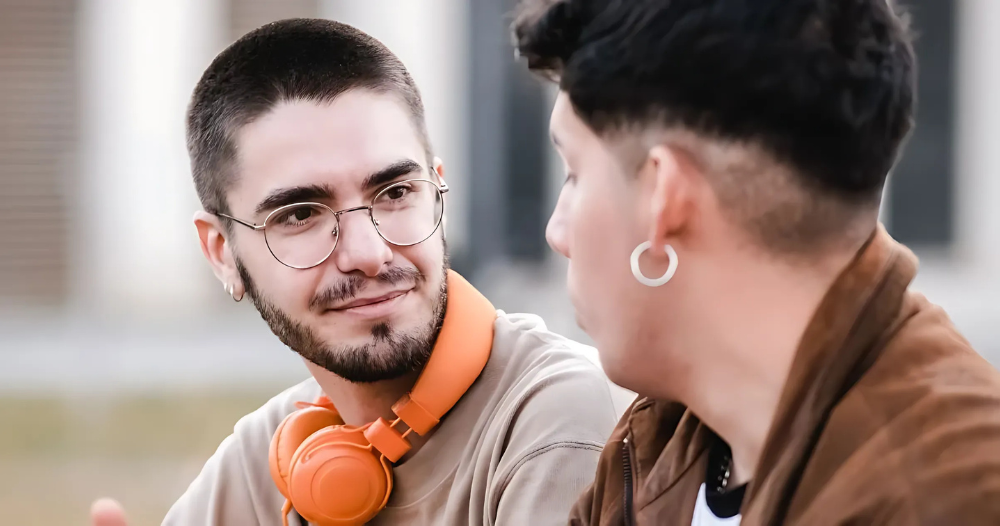Discover how eye gaze in body language reveals emotions, intentions, and messages. Learn to interpret eye movements and enhance communication with this powerful tool.
Table of Contents
Introduction
Ever had one of those moments when someone looks at you, and you just know exactly what they’re thinking? You didn’t hear a word, but you understood everything loud and clear. Welcome to the mysterious world of eye gaze in body language. Eyes don’t just help us see—they also speak volumes without uttering a single word.
In this article, we’re going to dive into how eye gaze plays a crucial role in non-verbal communication. Whether you’re trying to decode someone’s feelings, improve your own social interactions, or simply understand the unspoken messages flying around in a conversation, understanding eye gaze is your secret weapon.
What Is Eye Gaze in Body Language?

Before we get all mystical about eye contact and eye movements, let’s break down what eye gaze in body language actually means. Eye gaze refers to the direction and duration of someone’s gaze and can reveal a lot about their emotions, intentions, and thoughts. It’s not just about whether they look at you or not—it’s how long they hold that stare, how often their eyes shift, and where exactly they focus.
It’s a subtle, but incredibly powerful form of communication that can either give you the upper hand in social situations or, at the very least, help you understand the vibe of a conversation.
The Power of Eye Gaze in Body Language

1. Trust and Connection: Eye gaze is often linked to trust. Ever heard someone say, “Look me in the eyes when you’re talking to me”? That’s because maintaining eye contact can signal openness and honesty. On the flip side, avoiding eye contact might make someone feel uneasy or even suspicious.
- Direct eye gaze shows confidence and sincerity.
- Avoiding eye contact can imply shyness, discomfort, or evasion.
2. Dominance vs. Submission: The way people use their eyes in conversation can also reveal power dynamics. In a conversation, the person who maintains the most eye contact often holds the power in the interaction.
- Dominant gazes: A person who looks directly into someone else’s eyes without breaking eye contact often takes charge of the situation.
- Submissive gazes: Someone who looks away or avoids direct eye contact might be yielding or feeling inferior.
3. Attraction and Interest: Eyes don’t lie when it comes to attraction. Have you ever noticed how someone’s pupils dilate when they’re interested in something (or someone)? That’s because our pupils naturally expand when we’re emotionally engaged, especially when we’re attracted to someone.
- Long-lasting gaze: A person who’s interested in you may maintain eye contact for an extended period.
- Flirtatious glances: Quick, shy, or playful glances can indicate interest or attraction.
4. Emotions in Eye Gaze: The eyes are often called “windows to the soul,” and for a good reason. They can tell you when someone’s feeling happy, anxious, or even upset—sometimes before their words do.
- Sadness or discomfort: A downward gaze can indicate sadness or a lack of confidence.
- Surprise or shock: Wide eyes and rapid blinking might show that someone is shocked or surprised by something.
How to Read Eye Gaze in Body Language

Understanding eye gaze in body language requires more than just watching the direction of someone’s eyes. It’s about interpreting the context, movement, and subtle changes in how the eyes behave. Here’s a quick guide to help you read those all-important eye signals:
1. Eye Direction: Where a person’s eyes are looking says a lot. Is someone staring straight at you, or are their eyes darting around the room?
- Looking directly at you: This usually signals engagement, interest, or even confrontation.
- Looking to the side or avoiding eye contact: Might suggest discomfort, distraction, or avoidance.
2. Blink Rate: The frequency of blinking can be a giveaway for how someone feels.
- Fast blinking: May indicate nervousness or anxiety.
- Slow blinking: Can show relaxation or confidence.
- No blinking: Intense focus or maybe even aggression.
3. Pupil Dilation: Ever noticed how someone’s pupils get larger when they’re interested in something or someone? It’s a subconscious response to arousal, attraction, or excitement.
- Dilated pupils: Attraction, curiosity, excitement, or interest.
- Constricted pupils: Might suggest dislike, boredom, or irritation.
The Role of Cultural Differences in Eye Gaze

Eye gaze in body language can vary significantly depending on cultural background. While direct eye contact might be a sign of respect in some cultures, in others, it could be seen as disrespectful or confrontational.
- Western cultures: Typically, maintaining eye contact is a sign of confidence and sincerity.
- Asian cultures: In some Asian countries, avoiding eye contact can show respect, especially towards elders or authority figures.
- Middle Eastern cultures: Direct eye contact is common in friendly situations but can be seen as impolite in formal or respectful contexts.
Being aware of these cultural nuances can help prevent misinterpretations in cross-cultural communication.
Common Misunderstandings About Eye Gaze in Body Language

While eye gaze can reveal a lot, it’s not always as straightforward as it seems. Here are a few common misunderstandings about eye gaze:
1. “Avoiding Eye Contact Means Lying”: Not necessarily. People avoid eye contact for many reasons, including nervousness or shyness, but that doesn’t mean they’re lying. It’s important to consider the overall context.
2. “Direct Eye Contact Is Always a Good Thing”: While direct eye contact can signal confidence and trustworthiness, staring at someone without breaking eye contact can come across as intimidating or even aggressive.
3. “Pupil Dilation Always Means Attraction”: Although pupil dilation can be a sign of attraction, it can also occur when someone is excited, surprised, or even in a state of fear.
Conclusion
Understanding eye gaze in body language is a game-changer when it comes to interpreting unspoken messages. Whether you’re trying to gauge someone’s interest, trustworthiness, or emotional state, the eyes can tell you far more than words alone. By paying close attention to the subtle signals your eyes—and those of others—are sending, you’ll unlock a deeper level of connection and communication that goes beyond simple conversation.
So, next time you’re in a chat, don’t just focus on the words. Pay attention to the gaze, the glint in someone’s eyes, or the way they avoid looking at you—it could reveal the truth you’ve been looking for all along!
How to Read People Like A Book!
For Video Content: Checkout Our Youtube Channel
Frequently Asked Questions About Eye Gaze in Body Language
How can I improve my eye contact during a conversation?
The key is balance! Too much eye contact can be off-putting, while too little can make you seem disinterested. Try to make eye contact for a few seconds, then break it briefly before reconnecting. A natural, comfortable rhythm will come with practice.
What if I feel uncomfortable maintaining eye contact?
It’s okay! Some people naturally feel nervous about eye contact, especially in intense or confrontational situations. Focus on relaxing your body language and practicing in less stressful scenarios to build comfort.
Does eye gaze vary between men and women?
It can! Research suggests that women tend to use eye contact more frequently and for longer periods in social interactions, often as a way to express warmth or attentiveness. Men might use it to establish dominance or assert authority, though this can vary widely depending on the individual and the context.
By: Ardansharma



Pingback: Dominance vs Submission: What’s Really Going On? - Body Language and Psychology